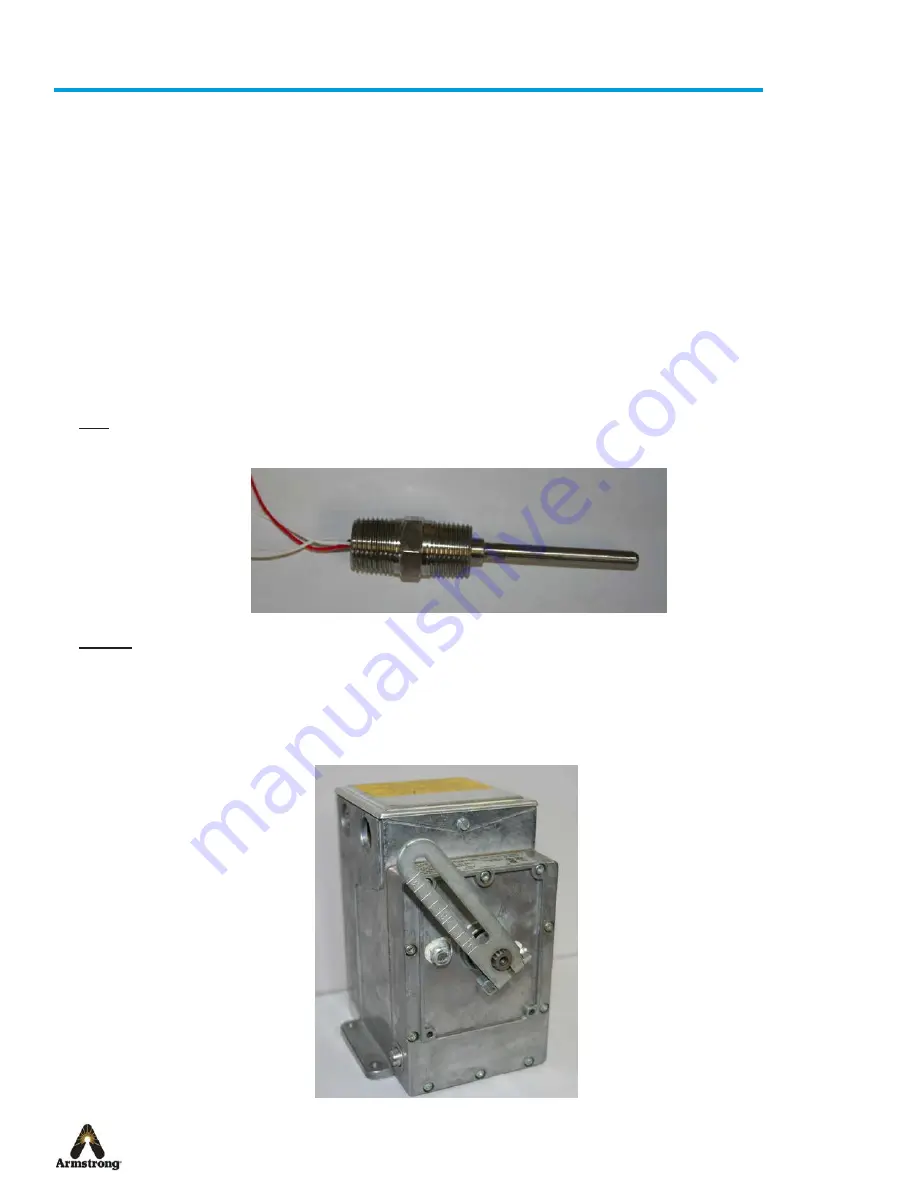
Armstrong International
IOM-706 V2.0
Flo-Direct Water Heater
Page 41 of 45
Appendix: Modulating Burner
Note
: information on this page is intended for technical personnel.
The standard Flo-Direct uses a powered open, spring-closed actuator. The burner will light on low fire and then go to fully
open or the high fire position. The heater’s output is only the full rated BTUs of the Flo-Direct. Sometimes it is necessary
to vary this output. To accomplish this task, the burner’s output can be modulated. The modulating option consists of
a 90-degree movement actuator, a programmable controller, and an RTD temperature sensor. The burner’s firing rate is
changed by the actuator moving a control arm on the burner that is mechanically linked to both an air and a fuel butterfly
damper. The burner will still light on low fire, but after the flame is established, the controller will open and close the burner’s
damper so as to track the set point. If the output is less than the set point, the controller will open the actuator until the
output matches the desired set point. When the Flo-Direct’s flame is shut off, the controller will go into manual mode and 0%
output, ready to start again.
Descriptions of Major Modulation
Components
RTD: The temperature sensor is a Resistance Temperature Detector. This is a 100-ohm, DIN curve, three-wire device. The
sensor is usually mounted in the outgoing water, either in the transfer pump’s piping or the lower canister assembly.
Actuator: The actuator is a bidirectional motor that has 90 degrees of arm movement. The motor will drive the arm either
clockwise or counter clockwise depending on the position desired by the controller. A “dry” contact in the controller will close
to drive the actuator one way, another “dry” contact will drive the controller the opposite direction. The position of the actuator
is sent back to the controller via a slidewire. This slidewire is a 100-ohm potentiometer with a wiper arm that will vary from
2–3 ohms to slightly over 100 ohms. If, for example, the controller desires a 50% open actuator, a contact will close to drive
the motor one way until the resistance is equal between the wiper arm and the fully open and fully closed resistance. Once the
resistance is even, the “dry” contacts will open, leaving the actuator in the 50% position.





































